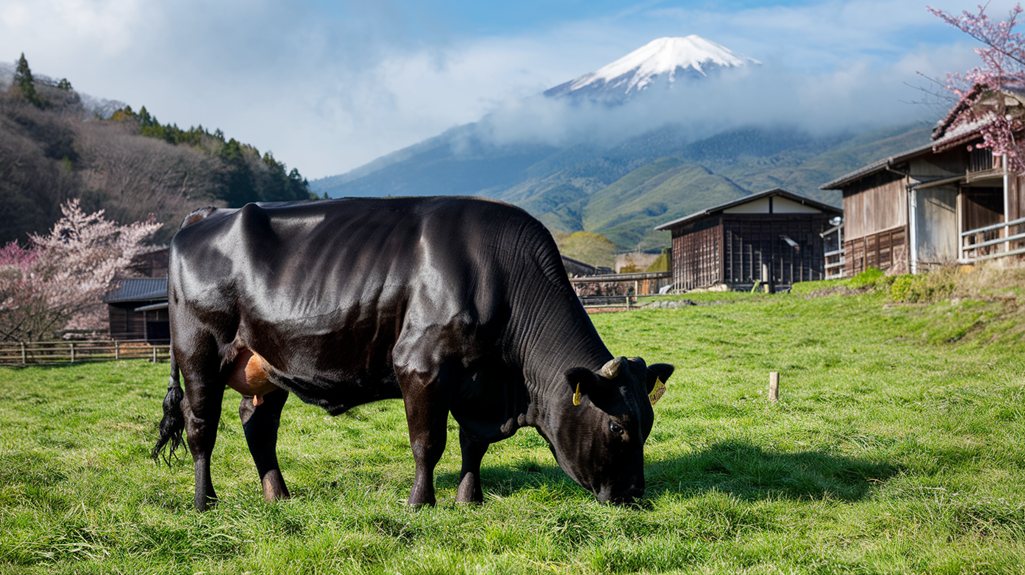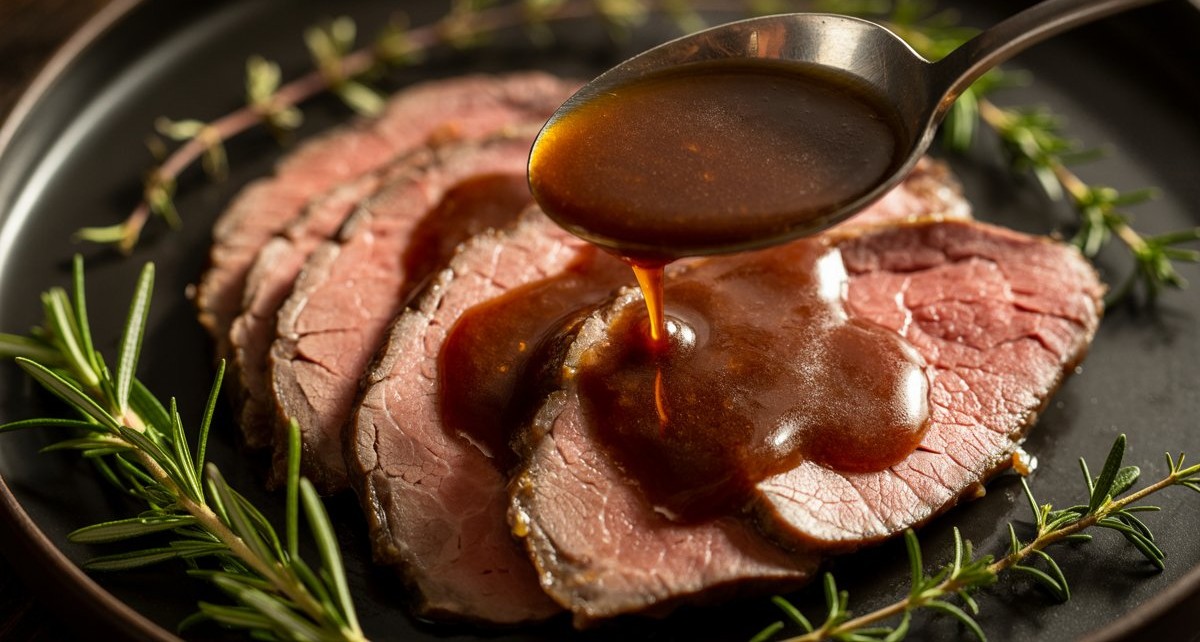Kobe beef’s origins trace back to a single genetic lineage of Japanese Black cattle, known as Tajima-gyu, raised exclusively in Japan’s Hyogo Prefecture. These cattle, descended from work animals brought from China nearly two millennia ago, now produce some of the world’s most premium beef through carefully controlled breeding and strict regulations. The progression from basic farm animal to global culinary phenomenon reflects both the evolution of Japanese cuisine and the meticulous standards that define this legendary meat.
Key Notes
- Kobe beef comes exclusively from the Tajima bloodline of Japanese Black cattle raised in Hyogo Prefecture, Japan.
- The cattle must be born, raised, and processed within Hyogo Prefecture to qualify as authentic Kobe beef.
- Each Kobe beef cattle receives a unique 10-digit identification number to verify its origin and lineage.
- The tradition of raising these cattle in Japan dates back to the 2nd century AD, when they were first introduced from China.
- Only about 3,000 cattle annually meet the strict certification standards required to be classified as Kobe beef.
The Origins and Heritage of Japanese Kobe Cattle
Kobe beef is a renowned luxury meat that originates from the specific Tajima bloodline of Japanese Black cattle in Japan’s Hyogo Prefecture. The remarkable heritage of these cattle breeds stretches back to the 2nd century AD, when the animals were initially introduced from China primarily for agricultural work.
The transformation of Kobe beef into a gourmet cuisine phenomenon began during Japan’s Meiji Restoration in 1868, as cultural attitudes toward beef consumption shifted.
Today, authentic Kobe beef production follows strictly regulated standards, with only about 3,000 cattle annually meeting certification requirements. These exacting rules require that cattle must be born, raised, and processed within Hyogo Prefecture, preserving the unique characteristics that have made the Tajima strain legendary in global culinary circles.
Strict Standards and Certification Requirements
Kobe beef designation is protected by one of the world’s most rigorous certification systems through Japanese officials.
To earn the coveted Kobe certification, Tajima cattle must be born, raised, and processed exclusively within Hyogo Prefecture, meeting exacting grading standards that leave no room for compromise.
Each qualifying animal must achieve a marbling score of 6 or higher and a meat quality score of 4-5, while maintaining a maximum carcass weight of 499.9 kg.
A sophisticated 10-digit identification system tracks every animal from birth to processing, ensuring complete transparency throughout their life cycle.
With only 3,000 cattle annually meeting these strict requirements, true Kobe beef maintains its status as one of the world’s most exclusive meat products.
From Farm to Table: The Journey of Authentic Kobe Beef
Authentic Kobe beef is a product that begins in the rolling hills of Hyogo Prefecture, where Tajima cattle graze under carefully monitored conditions. Each animal receives a unique 10-digit identification number, ensuring complete traceability throughout its passage from birth to plate.
| Production Stage | Location | Quality Control |
|---|---|---|
| Birth | Hyogo Farms | Lineage Verification |
| Raising | Hyogo Prefecture | Diet Monitoring |
| Processing | Local Facilities | Grade Assessment |
| Certification | Testing Centers | A4/A5 Standards |
| Distribution | Select Markets | Track & Trace |
The production process involves specialized grain feeding and meticulous care, including regular brushing and occasional massage of the cattle. This attention to detail, combined with strict adherence to quality standards, results in the highly sought-after marbling that makes Kobe beef a luxury delicacy commanding premium prices of $200-500 per pound.





